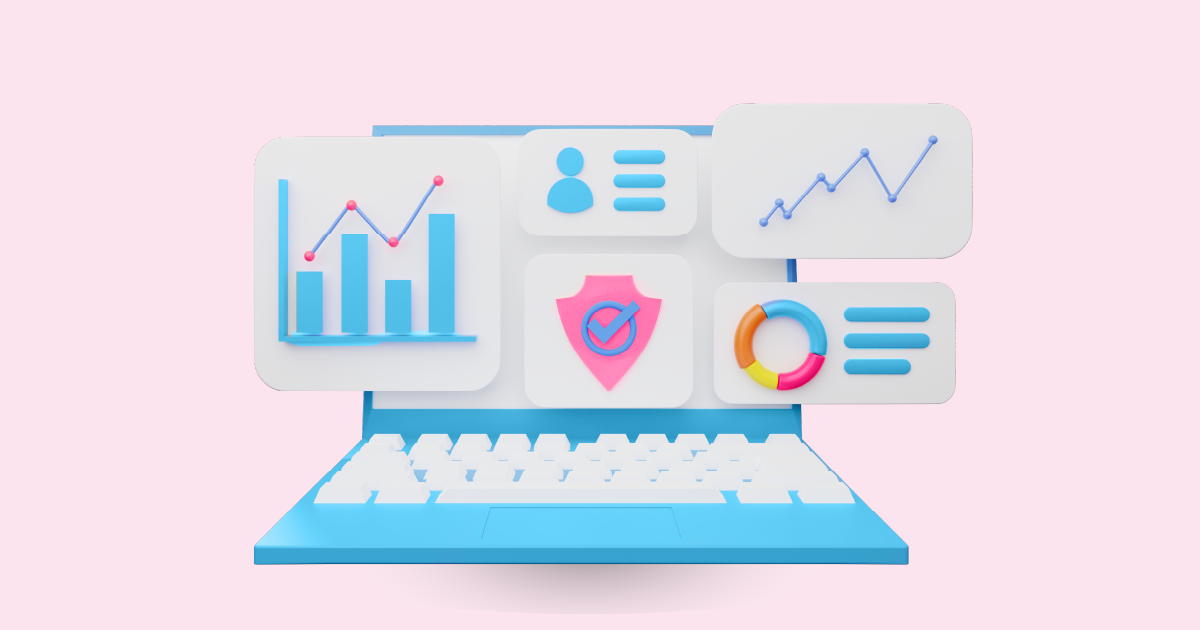In today’s fast-paced market, understanding what makes consumers tick is more crucial than ever. But what exactly are consumer behavior insights, and how can they transform your business? Let’s dive into the fascinating world of consumer behavior and uncover the secrets that drive purchasing decisions.
What Are Consumer Behavior Insights?

Consumer behavior insights refer to the deep understanding of how consumers think, feel, and act when making purchasing decisions. It’s like peering into the minds of your customers, uncovering their motivations, preferences, and pain points. By leveraging these insights, businesses can tailor their products, services, and marketing strategies to better meet consumer needs, ultimately driving growth and success.
Importance of Understanding Consumer Behavior
Why should you care about consumer behavior? Because it’s the key to creating a customer-centric business. When you understand your consumers’ behavior, you can anticipate their needs, offer relevant products, and communicate in a way that resonates with them. In a competitive market, this understanding can be the difference between winning and losing customers.
The Role of Consumer Behavior in Marketing
Marketing without understanding consumer behavior is like shooting in the dark. Consumer behavior insights allow marketers to align products with consumer needs, ensuring that what you offer is exactly what your audience is looking for.
Aligning Products with Consumer Needs
Imagine trying to sell a winter coat in a tropical country—it’s not going to work, right? Consumer behavior insights help you understand what your audience needs, so you can create products that solve their problems or fulfill their desires. Whether it’s a new feature, a better price point, or a more appealing design, aligning your products with consumer needs is crucial for success.
Tailoring Marketing Strategies Based on Consumer Behavior
Once you know what your consumers want, you can craft marketing messages that speak directly to them. This might mean using different messaging for different demographics or choosing the right time and place to reach your audience. The more personalized your marketing, the more likely it is to resonate with consumers and drive conversions.
Key Factors Influencing Consumer Behavior
Understanding consumer behavior isn’t just about knowing what people buy—it’s about understanding why they buy. Several key factors influence consumer behavior, and recognizing these can help you better predict and influence purchasing decisions.
Psychological Factors
Psychological factors play a significant role in shaping consumer behavior. These include:
- Motivation and Perception: What drives a consumer to buy a particular product? It could be a basic need, like hunger, or a more complex psychological desire, like status or self-expression. Perception also matters—how consumers perceive your brand can greatly influence their purchasing decisions.
- Learning and Beliefs: Consumers’ past experiences and the information they gather shape their beliefs about products. Positive experiences lead to brand loyalty, while negative ones can turn consumers away for good.
Social Factors
Social factors, such as family, friends, and social media, also significantly impact consumer behavior.
- Family and Social Groups: The opinions and behaviors of close social circles often influence consumer decisions. If everyone in a consumer’s social group is using a particular product, they’re more likely to buy it themselves.
- Social Media Influence: In today’s digital age, social media platforms are powerful tools for influencing consumer behavior. From influencer endorsements to user-generated content, social media can sway opinions and drive purchases.
Personal Factors
Each consumer is unique, and personal factors such as age, occupation, lifestyle, and economic status play a crucial role in their purchasing decisions.
- Age, Occupation, and Lifestyle: A young professional in their 20s will have different needs and preferences than a retiree. Understanding these personal factors allows businesses to target their offerings more effectively.
- Economic Status: Consumers’ financial situations influence what they can afford and how they prioritize their spending. Luxury brands target high-income consumers, while budget brands cater to those looking for value.
How to Collect Consumer Behavior Insights
Gaining insights into consumer behavior requires a mix of qualitative and quantitative research methods. Here are some of the most effective ways to gather this valuable information:
Surveys and Questionnaires
Surveys are one of the most common methods for collecting consumer behavior insights. By asking targeted questions, you can gather data on consumer preferences, habits, and motivations. Whether conducted online or in person, surveys provide direct feedback from your target audience.
Focus Groups
Focus groups involve gathering a small group of consumers to discuss their opinions and experiences with your product or brand. This method allows for in-depth exploration of consumer behavior, providing valuable qualitative insights.
Observation Methods
Sometimes, actions speak louder than words. Observing how consumers interact with your product in a natural setting can reveal insights that surveys might miss. This could involve in-store observations, usability testing, or even analyzing how consumers navigate your website.
Social Media Analytics
Social media platforms are treasure troves of consumer behavior insights. By analyzing social media activity, you can gain insights into what your audience is talking about, what content they engage with, and how they feel about your brand.
Purchase History Analysis
Looking at past purchasing behavior can reveal patterns and trends that help predict future behavior. By analyzing purchase history, you can identify loyal customers, anticipate repeat purchases, and tailor your marketing efforts accordingly.
Tools for Analyzing Consumer Behavior
Once you’ve gathered consumer behavior data, the next step is analysis. Here are some powerful tools that can help:
Google Analytics
Google Analytics is a must-have tool for understanding how consumers interact with your website. It provides detailed insights into traffic sources, user behavior, and conversion rates, allowing you to optimize your online presence.
CRM Software
Customer Relationship Management (CRM) software helps you manage and analyze customer interactions and data throughout the customer lifecycle. It enables personalized marketing and improves customer retention by providing a comprehensive view of consumer behavior.
Social Listening Tools
Social listening tools track mentions of your brand or products across social media platforms. By monitoring these conversations, you can gain real-time insights into consumer sentiment and trends, helping you respond quickly to customer needs.
Case Studies
Let’s look at how some of the biggest brands use consumer behavior insights to stay ahead of the competition.
Nike: Understanding Consumer Motivation
Nike is a master of tapping into consumer motivation. By understanding the psychological factors that drive consumers—such as the desire for self-improvement and achievement—Nike creates marketing campaigns that resonate on a deep emotional level. This approach has helped them build a loyal customer base and become one of the most recognized brands globally.
Amazon: Using Purchase History for Personalized Marketing
Amazon’s recommendation engine is a perfect example of using consumer behavior insights to drive sales. By analyzing purchase history and browsing behavior, Amazon provides personalized recommendations that encourage repeat purchases. This level of personalization has been a key factor in Amazon’s success.
The Impact of Consumer Behavior Insights on Product Development
Consumer behavior insights don’t just influence marketing—they’re also critical in product development.
Innovating Based on Consumer Needs
Understanding what consumers want helps companies innovate effectively. Whether it’s developing new features, improving existing products, or creating entirely new offerings, consumer behavior insights guide companies in making decisions that align with market demand.
Customizing Products for Different Demographics
Different consumer segments have different needs. By analyzing consumer behavior, companies can customize products to suit various demographics, increasing the chances of success in diverse markets.
Challenges
While understanding consumer behavior is incredibly valuable, it’s not without challenges.
Data Privacy Concerns
As companies collect more data on consumers, privacy concerns are growing. Consumers are increasingly aware of how their data is used, and companies must navigate these concerns carefully to maintain trust.
Interpreting Complex Data
Consumer behavior data can be complex and multifaceted. Interpreting this data accurately requires expertise and sophisticated tools, and even then, it can be challenging to draw clear conclusions.
Future Trends
The field of consumer behavior analysis is constantly evolving, with new technologies and methodologies emerging.
The Role of AI in Consumer Behavior Analysis
Artificial Intelligence (AI) is revolutionizing how companies analyze consumer behavior. AI can process vast amounts of data quickly, identifying patterns and trends that would be impossible for humans to detect. This enables more accurate predictions and more personalized marketing.
Predictive Analytics for Consumer Trends
Predictive analytics uses historical data to forecast future consumer behavior. This approach helps companies stay ahead of trends and make proactive decisions, ensuring they’re always one step ahead of the competition.
Conclusion
Consumer behavior insights are the key to understanding your customers and delivering products and services that truly meet their needs. By leveraging these insights, businesses can create more effective marketing strategies, develop better products, and ultimately achieve greater success in the market.
If you’re ready to take your understanding of consumer behavior to the next level, AIM Technologies offers cutting-edge tools that can help you gain deeper insights into your customers. Request a demo from AIM Technologies today and see how you can transform your marketing and product strategies with the power of data-driven insights.
FAQs
What are consumer behavior insights?
- Consumer behavior insights are the understanding of how consumers think, feel, and act when making purchasing decisions. These insights help businesses tailor their offerings to better meet consumer needs.
How can companies collect consumer behavior insights?
- Companies can collect consumer behavior insights through surveys, focus groups, observation methods, social media analytics, and purchase history analysis.
What tools are best for analyzing consumer behavior?
- Some of the best tools for analyzing consumer behavior include Google Analytics, CRM software, and social listening tools.
How do consumer behavior insights affect marketing strategies?
- Consumer behavior insights allow companies to tailor their marketing strategies to better resonate with their target audience, leading to more effective campaigns and higher conversion rates.
What are the challenges in understanding consumer behavior?
- Challenges include data privacy concerns, interpreting complex data, and staying ahead of evolving consumer trends.




